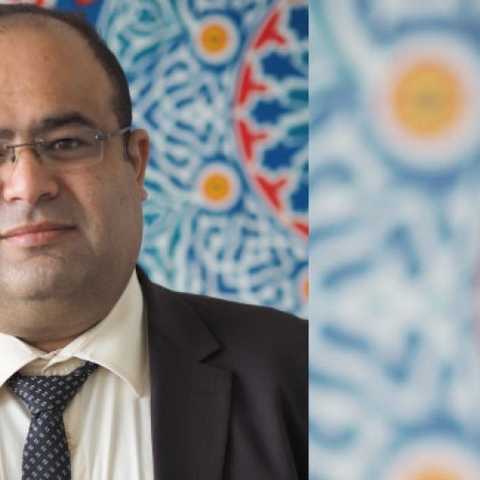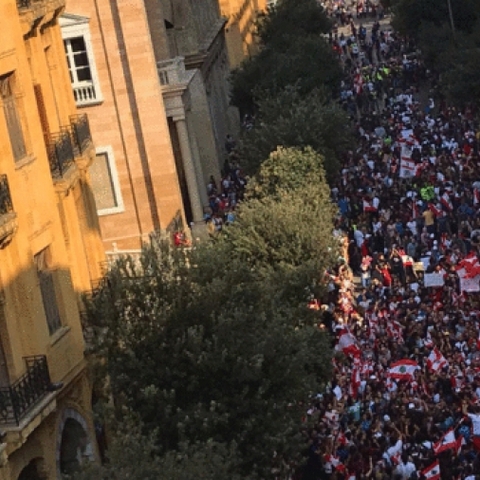From Authoritarianism to Uncertainty: An Explainer of Syria’s Journey under the House of Assad

IMAGO / ZUMA Press Wire
Introduction
Syria’s modern history, from Hafez al-Assad’s rise in 1970 to Bashar al-Assad’s fall in 2024, is a
story of authoritarianism, conflict, and resilience. This article offers a concise primer on the key
events and dynamics shaping Syria’s trajectory, exploring how the Assad regime’s consolidation
of power, socio-economic policies, and regional ambitions laid the foundation for corruption,
inequality, and eventual unrest. These factors culminated in a brutal war that made Syria a focal
point of global geopolitical struggles.
The fall of the Assad regime in 2024 raises pressing questions about reconstruction,
reconciliation, and governance, underscoring the importance of understanding Syria’s past to
envision its future. While this article provides a broad overview, readers are encouraged to
consult the listed resources for deeper insights into the complex history of Assad’s fifty-year rule
and its enduring legacy.
Hafez al-Assad (1970 – 2000): Architect of Authoritarianism and
Regional Dominance
Hafez al-Assad’s ascent to power in 1970 through the ‘Corrective Movement’ marked a turning
point in Syria’s modern history, 1 laying the groundwork for decades of authoritarian rule. By
exploiting divisions within the Ba’ath Party and military, Assad eliminated his radical-left
comrades with Ba’ath and consolidated power, creating a neopatrimonial 2 regime defined by
personal leadership and clientelism. 3 The Ba’ath Party, previously an ideological movement, was
transformed into a tool of governance, dominating public life and securing loyalty through
extensive patronage networks. 4 This system was reinforced by the Mukhabarat (intelligence
apparatus), which suppressed dissent and fostered a climate of fear. Assad’s reliance on trusted
Alawite officers to control the military further cemented its loyalty, rendering the regime
effectively “coup-proof.” 5 6
The 1973 Constitution formalized Assad’s dominance, granting him sweeping authority over the
judiciary, parliament, and armed forces, effectively sidelining any checks on executive power. 7
This institutional control was starkly demonstrated in the 1982 Hama Massacre, where Assad’s
forces brutally crushed a Muslim Brotherhood-led uprising, 8 killing tens of thousands and razing
parts of the city. 9 The massacre exemplified the regime’s zero-tolerance approach to opposition
and its readiness to use extreme measures to maintain power.
Assad’s rule also marked a shift from the Ba’ath Party’s earlier radical socio-economic policies.
By the 1980s, gradual economic liberalization aimed to secure support from Damascus’s
bourgeoisie, but it came at a cost. Austerity measures, reduced public sector jobs, and declining
real wages disproportionately impacted the working class, while trade unions were co-opted to
enforce labor discipline. These policies deepened socio-economic grievances, particularly among
ordinary Syrians. 10
In foreign policy, Assad pursued regional dominance. The October 1973 ‘Ramadan War,’ 11
though militarily inconclusive, bolstered his image as a defender of Arab nationalism, 12 and
allowed him to frame dissent as unpatriotic. His intervention in Lebanon’s civil war in 1976
reflected his strategy of extending Syrian influence, employing ruthless tactics to position Syria
as a regional powerbroker. 13 14 His alliance with the Soviet Union further strengthened the regime
through military and economic aid, while his opposition to Iraq during the Gulf Wars secured
financial backing from Arab Gulf states, reinforcing Syria’s rentier state model. 15
Bashar al-Assad’s Era (2000 – 2011): Roots of Dissent and a Prelude to
Uprising
Bashar al-Assad’s ascension to power in 2000 initially sparked cautious optimism among Syrians,
who hoped for political reform and modernization after decades of authoritarian rule under Hafez
al-Assad. The Damascus Spring briefly embodied these hopes, with intellectuals
and activists advocating for judicial independence, political pluralism, an end to emergency laws,
and greater civic participation. 16 17 Initiatives like the "Atassi Forum" and the "Manifesto of the 99"
highlighted widespread demands for change. However, by 2001, these movements were
suppressed. Reform advocates were arrested, forums dismantled, and authoritarian control
reasserted, revealing Assad’s commitment to preserving Ba’athist dominance. 18 Political reform
was sidelined under the pretext that it would only follow economic modernization. 19
Economically, Assad’s tenure ushered in neoliberal ‘reforms’ that deepened inequality and
entrenched patrimonial control. The 2005 shift to a "social market economy" aimed to attract
foreign investment, particularly from Gulf states and Turkey, while curtailing the state’s role in
welfare provision. 20 These policies disproportionately favored elites and foreign investors, while
austerity measures, subsidy cuts, and privatization placed greater burdens on rural and working-
class populations. The government’s failure to address the devastating 2007–2009 drought, 21
which displaced large numbers of rural Syrians, further exacerbated grievances, widening socio-
economic divides and fostering discontent.
Regionally, Assad faced a major blow in 2005 following the assassination of Lebanese Prime
Minister Rafik al-Hariri, an act widely attributed to Syria. 22 Under mounting international
pressure, Assad withdrew Syrian troops from Lebanon, ending nearly three decades of dominance
and significantly weakening Syria’s regional influence. Despite this setback, Assad sought to
maintain geopolitical relevance by continuing to align with Iran in the so-called "axis of
resistance." He supported Hezbollah during the 2006 war with Israel and backed Hamas during
the 2009 Gaza conflict, bolstering his nationalist credentials. 23 Previously, Assad capitalized on
anti-U.S. sentiment during the 2003 Iraq invasion and facilitated the movement of jihadist groups
into Iraq, projecting Syria as a challenger to Western intervention.
The 2011 Uprising and the Descent into War (2011–2015)
By 2011, Syria was grappling with deep-seated grievances, as years of corruption, economic
hardship, and harsh political repression had severely undermined public confidence in the regime.
The sharp rise in food and fuel prices, coupled with high youth unemployment and an all-
encompassing security apparatus, made everyday life increasingly intolerable. Amid this growing
frustration, Syrians drew encouragement from the Arab Spring, where mass uprisings in Tunisia
and Egypt had demonstrated that entrenched autocracies could be challenged
What began in March 2011 as a series of peaceful protests - demanding political reform, social
equity, and the release of political prisoners – quickly turned into a nationwide movement. 24
Syrians united across sectarian, ethnic, and class lines, envisioning a future of dignity and justice.
However, peaceful demonstrations quickly unraveled when the Assad regime responded with
brutal repression, escalating into one of the most devastating conflicts of the century.. 25 Early on,
Human Rights Watch documented the use of live ammunition against demonstrators, mass
arrests, torture, and other crimes against humanity, signaling the regime’s commitment to
suppress dissent at any cost. 26
The regime’s violent response drove segments of the opposition to militarize. Defectors from the
Syrian military joined forces with civilian activists to form the Free Syrian Army (FSA),
signaling the transition from peaceful protests to armed resistance. While the FSA represented an
organized effort to challenge Assad, the turn to multi-dimensional armed conflict fragmented the
opposition, creating internal divisions across armed opposition and undermining cohesion. 27 This
shift also complicated the uprising’s ability to sustain its original goals of political reform and
social justice.
Bashar al-Assad further deepened these divisions by framing the uprising as a sectarian conflict.
The regime portrayed the opposition as Sunni extremists, stoking fear among minority
communities such as Alawites, Christians, and Druze. By presenting itself as the “protector of
minorities,” the regime consolidated support from key segments of the population, even as its
violence escalated. 28 Targeted military campaigns against Sunni-majority areas exacerbated
societal fractures, ensuring that sectarian polarization would remain a defining feature of the
conflict. 29
External interventions compounded these challenges. Regional actors like Turkey, Qatar, and
Saudi Arabia provided financial and military support to various opposition factions, 30 prioritizing
their own strategic and sectarian agendas over the broader Syrian cause. 31 These disjointed efforts
allowed extremist groups, including Jabhat al-Nusra and ISIS, to exploit the chaos and expand
their influence. Their rise not only discredited the opposition internationally but also added layers
of complexity to an already fragmented conflict.
By 2015, the uprising had evolved into a multi-dimensional war. The Assad regime’s reliance on
indiscriminate violence and sectarian manipulation ensured its survival but left Syria devastated.
At the same time, the opposition’s fragmentation and dependence on external actors relatively
eroded its credibility and effectiveness, leaving Syrians trapped in a protracted and devastating
conflict. The resulting humanitarian crisis and societal collapse have left the country’s future
uncertain and deeply fractured.
Internationalization of the Syrian Conflict (2015–2020)
The Syrian conflict’s trajectory shifted decisively with Russia’s intervention in 2015, marking a
turning point in favor of Bashar al-Assad’s regime. Framed as counterterrorism, Russian
airstrikes targeted opposition-held territories and civilian populations, enabling Assad’s forces to
reclaim strategic areas, including Aleppo by late 2016. 32 These military victories, coupled with the
establishment of permanent naval and airbases in Tartus and Hmeimim, 33 solidified Moscow’s
presence in the Eastern Mediterranean, allowing it to project power regionally while reinforcing
Assad’s survival. 34
Concurrently, the Assad regime intensified its use of chemical weapons, with attacks in Khan
Shaykhun (2017), and Douma (2018), illustrating its readiness to, after Eastern Ghouta (2013),
again employ weapons of mass destruction. 35 Attributed to Assad by international bodies like the
OPCW, 36 these atrocities highlighted his disregard for global norms or human rights. Limited
international direct reactions, such as the U.S. punitive strikes following the Khan Shaykhun
attack, paved way for exacerbated Assad’s brutality in the years to follow.
Iran’s role was equally critical in sustaining Assad. Financial aid and the deployment of the
Islamic Revolutionary Guard Corps (IRGC) and militias like Hezbollah bolstered the regime’s
military efforts, 37 particularly in Sunni-majority regions. While this ensured Assad’s survival, it
exacerbated sectarian divides and entrenched societal polarization, deepening Syria’s
fragmentation. Tehran’s actions reinforced its regional strategy within the "axis of resistance" but
further isolated the regime from broader societal reconciliation. 38
The U.S.-led coalition, meanwhile, concentrated on dismantling ISIS, achieving major territorial
gains through extensive airstrikes and ground support from the Kurdish-led Syrian Democratic
Forces (SDF). 39 By 2019, ISIS’s territorial control was eradicated, but the long campaign came at
a high cost. Cities like Raqqa were left in ruins, with significant civilian casualties and
widespread destruction of infrastructure. 40
Turkey’s military interventions, including operations Euphrates Shield (2016) and Olive Branch
(2018), further complicated the conflict. Framed as counterterrorism against the Kurdish People’s
Protection Units (YPG), 41 , 42 Turkey’s actions created Turkish-controlled zones in northern Syria,
reshaping local dynamics and exacerbating tensions between various actors such as Kurdish
groups (YPG/SDF) and Turkish-backed militias, local Kurdish and Arab populations, the Assad
regime, Russia and Iran, as well as Western allies like the U.S. and NATO. . 43 , 44
By 2020, Syria had become a proxy battleground for global and regional powers. The conflict
resulted in over 6.6 million refugees and six million internally displaced people, while destroyed
infrastructure and unchecked insecurity entrenched despair. 45 , 46 Foreign interventions, sectarian
polarization, and humanitarian neglect cemented Syria’s devastation and prolonged its instability.
The Fall of the Assads (2020–2024): Unraveling a Regime’s Fragile
Foundations
The Assad regime’s downfall between 2020 and 2024 was the result of a convergence of
economic, social, and geopolitical factors. Years of economic decline, worsened by international
sanctions, decreased humanitarian aid, and rampant corruption, eroded the regime’s legitimacy
among its core base. 47 The Syrian pound’s sharp devaluation made basic necessities unaffordable,
with 90% of Syrians living below the poverty line. 48 Public services collapsed, leaving the
population in dire conditions and fueling widespread discontent. Grassroots protests, initially
centered in Suwayda and later spreading nationwide, reignited demands for change. 49 Calls for
regime overthrow, echoing the 2011 uprising, gained traction, with demonstrators also demanding
the implementation of UN Resolution 2254. 50
Unlike previous events, these protests cut across sectarian and regional divides, underscoring the
growing disillusionment with Assad’s rule. 51
The regime’s weakening was exacerbated by strained alliances with key regional and
international actors. Efforts to normalize ties with Arab states, contingent on Assad curbing drug
trafficking and reducing Iranian influence, faltered as he failed to deliver meaningful
concessions. 52 Relations with Iran also deteriorated amid Tehran’s suspicions that Assad leaked
intelligence on Iranian positions to Israel and his ‘calculated silence’ during Hezbollah’s conflict
with Israel. 53 , 54 Simultaneously, both Iran and Russia turned their attention elsewhere—Iran
focused on Hezbollah’s war, while Russia diverted resources to its campaign in Ukraine. This left
Assad increasingly isolated and unable to maintain control.
These vulnerabilities culminated in a decisive offensive by Hay’at Tahrir al-Sham in late
November 2024. The operation, dubbed “Deterrence of Aggression,” swiftly dismantled Assad’s
ill-equipped defenses and reclaimed key territories. The regime’s military collapse highlighted its
dependence on external patrons, whose diminishing support left Assad incapable of mounting a
credible defense. By December 8, rebels had seized Damascus, forcing Assad to flee and ending
over five decades of authoritarian rule by the Assad family.
The regime’s rapid collapse exposed its fragile foundations and ushered in a precarious transition
for Syria. The new administration inherited a shattered economy, pervasive governance
challenges, and a political landscape dominated by international actors competing for influence,
signaling a turbulent and uncertain path forward.
The Way Forward
Syria’s post-Assad transition presents a complex interplay of threats, challenges, and
opportunities. Fragmented control across the country, fears of authoritarian continuity under the
new administration, and the risk of sectarian tensions reignited by remnants of Assad’s militias
pose significant destabilizing factors. Reactionary policies, including restrictive views on
women’s roles, further impede inclusivity. 55 Additionally, the estimated $250–$400 billion cost of
economic recovery and uncertainties surrounding international support under a Syrian-led
agenda, as well as the new administration’s aspirations in transitioning into a neo-liberal
economy, remain critical concerns.
Despite these obstacles, pathways for progress exist. Grassroots mobilization and the rebuilding
of trade unions, feminist organizations, and community networks are crucial for advancing
democracy and social justice. 56 Safeguarding political space against potential restrictions by the
new administration is essential to ensure that dictatorship does not resurface in Syria’s future.
International leverage, through diplomatic pressure and conditional aid aligned with long-term
developmental priorities rather than short-term humanitarian needs, can support inclusivity and
structural reform.The success of Syria’s transition hinges on its people’s ability to resist
authoritarianism, bridge sectarian divides, and champion a sustainable, democratic framework.
With collective determination and strategic action, the vision of an inclusive and progressive
Syria remains attainable.
1 Also, the “Correctionist Movement,” led by Hafez al-Assad on November 13, 1970, was a bloodless coup within
Syria’s Ba’ath Party. It ousted Salah Jadid, the de facto leader of Baath party between 1966 and 1970, and established
Assad’s authoritarian rule, consolidating control over the military, intelligence, and party under his leadership.
2 Neopatrimonialism is a system of social hierarchy where patrons use state resources to secure the
loyalty of ‘clients’ in the general population.
3 Salaymeh, Bilal. “Syria Under al-Assad Rule: A Case of Neopatrimonial Regime." Ortadoğu Etütleri 10, no. 2
(December 2018): 140–170.
4 Ibid.
5 Raymond Hinnebusch, “Syria: From ‘Authoritarian Upgrading’ to Revolution?” International Affairs 88, no. 1
(2012): 95–113. https://doi.org/10.2307/41428543.
6 Lina Khatib and Lina Sinjab, “Syria’s Transactional State: How the Conflict Changed the Syrian State’s Exercise of
Power”. Chatham House, Middle East Programme, October 2018. https://www.chathamhouse.org/2018/10/syrias-
transactional-state
7 Syrian Arab Republic. Constitution of 1973. March 13, 1973. Accessed January 11, 2025.
https://www.refworld.org/legal/legislation/natlegbod/1973/en/38517.
8 Muslim Brotherhood is an Islamist political organization established in the 1940s. Opposing Ba'athist secularism, it
became a key force against Hafez al-Assad's regime, culminating in the 1982 Hama uprising, which was brutally
crushed. The group has since operated largely in exile.
9 Syrian Network for Human Rights. “The 40th Anniversary of the 1982 Hama Massacre Coincides with Rifaat al
Assad’s Return to Bashar al Assad.” February 28, 2022. https://snhr.org/blog/2022/02/28/57397/
10 Joseph Daher, “Syria Trade Unions Under the Scope: History, instrumentalization, and labour dissents”, Friedrich
Ebert Stiftung, Beirut 2023. https://library.fes.de/pdf-files/bueros/beirut/20484.pdf
11 Also known as the ‘Yom Kippur’ War
12 Raymond Hinnebusch, “Syria: From ‘Authoritarian Upgrading’ to Revolution?” International Affairs 88, no. 1
(2012): 95–113. https://doi.org/10.2307/41428543.
13 This included assassinations of prominent Lebanese figures such as the Druze community leader Kamal Jumblatt in
1977 and the president-elect René Moawad in 1989 as part of Assad’s regime strategy to consolidate its control over
Lebanon and eliminate political figures who opposed its dominance.
14 Anan Tello, “How decades of Assad regime interference left lingering scars on Lebanon’s political life,” Arab News,
January 5, 2025. https://arab.news/5f7ny (accessed January 12, 2025)
15 Leonard Robinson, “Rentierism and Foreign Policy in Syria,” Arab Studies Journal 4, no. 1 (1996): 24–39.
16 The Damascus Spring was a period of intense political and social debate in Syria which started after the death of
Hafez al-Assad in June 2000 and continued to some degree until autumn 2001, when most of the activities associated
with it were suppressed by the government of Bashar al-Assad.
17 Raymond Hinnebusch, “Syria: From ‘Authoritarian Upgrading’ to Revolution?” International Affairs 88, no. 1
(2012): 95–113. https://doi.org/10.2307/41428543
18 Human Rights Watch. No Room to Breathe: State Repression of Human Rights Activism in Syria. October 16, 2007.
https://www.hrw.org/report/2007/10/16/no-room-breathe/state-repression-…
19 Hinnebusch, “Syria: From ‘Authoritarian Upgrading’ to Revolution?”
20 Joseph Daher, “Syria Trade Unions Under the Scope: History, instrumentalization, and labour dissents”, Friedrich
Ebert Stiftung, Beirut 2023. https://library.fes.de/pdf-files/bueros/beirut/20484.pdf
21 Hinnebusch, “Syria: From ‘Authoritarian Upgrading’ to Revolution?”
22 William Harris, “Bashar al-Assad’s Lebanon Gamble”, Middle East Quarterly 12, no. 3, (2005).
https://www.meforum.org/middle-east-quarterly/bashar-al-assads-lebanon-… (accessed January 12, 2025)
23 Raymond Hinnebusch, “Syria: From ‘Authoritarian Upgrading’ to Revolution?” International Affairs 88, no. 1
(2012): 95–113. https://doi.org/10.2307/41428543
24 International Crisis Group. (2011). “Popular Protest in North Africa and the Middle East (VI): The Syrian People’s
Slow Motion Revolution.” Middle East/North Africa Report no. 108 (2011). https://shorturl.at/NSvdh
25 Steven Heydemann, “Syria and the Future of Authoritarianism.” Journal of Democracy, 24(4), 59–73. (2013)
26 Human Rights Watch. (2011). “‘We’ve Never Seen Such Horror’: Crimes against Humanity by Syrian Security
Forces”. https://www.hrw.org/report/2011/06/01/weve-never-seen-such-horror/crime…-
security-forces
27 Charles Lister, Dynamic Stalemate: Surveying Syria’s Military Landscape (Doha: Brookings Doha Center, 2014)
https://www.brookings.edu/wp-content/uploads/2016/06/Syria-Military-Lan…
28 Friederike Stolleis, ed., Playing the Sectarian Card: Identities and Affiliations of Local Communities in Syria (Beirut:
Friedrich Ebert Stiftung, 2015)
29 Christopher Phillips. “Sectarianism and Conflict in Syria.” Third World Quarterly 36, no. 2 (2015): 357–376. DOI:
10.1080/01436597.2015.1015788
30 Charles Lister, Dynamic Stalemate: Surveying Syria’s Military Landscape
31 Kim Sengupta, "Turkey and Saudi Arabia Alarm the West by Backing Islamist Extremists the Americans Had
Bombed in Syria," The Independent, May 12, 2015. https://www.independent.co.uk/news/world/middle-east/syria-
crisis-turkey-and-saudi-arabia-shock-western-countries-by-supporting-antiassad-jihadists-
10242747.html?utm_source=chatgpt.com (accessed on January 12, 2025)
32 International Crisis Group. Russia’s Choice in Syria. International Crisis Group, 2016.
http://www.jstor.org/stable/resrep31815
33 TASS. “Moscow cements deal with Damascus to keep 49-year presence at Syrian naval and air bases.” Published
January 20, 2017. https://tass.com/defense/926348 (accessed on January 12, 2025)
34 Fyodor Lukyanov, “Moscow's Syria gamble has worked,” IPS Journal. Published on February 5, 2020.
https://www.ips-journal.eu/regions/middle-east-north-africa/moscows-syr…
35 Amnesty International. “Syria: Witness testimony reveals details of illegal chemical attack on Saraqeb.” Amnesty
Internationl, February 6, 2018. https://www.amnesty.org/en/latest/news/2018/02/syria-witness-testimony-…-
details-of-illegal-chemical-attack-on-saraqeb/?utm_source=chatgpt.com
36 Organisation for the Prohibition of Chemical Weapons (OPCW). "OPCW Releases Third Report by the Investigation
and Identification Team." January 27, 2023. https://www.opcw.org/media-centre/news/2023/01/opcw-releases-third-
report-investigation-and-identification-team.
37 Naame Shaam. “Iran in Syria: From an Ally of the Regime to an Occupying Force.” Naame Shaam, November 2014.
http://www.naameshaam.org/report-iran-in-syria/
38 Ibid.
39 The local ally of the U.S.-led International Coalition for Countering ISIS. SDF is the armed wing of the Kurdish-
dominated Autonomous Administration in North and East Syria (AANES).
40 Amnesty International. “War of Annihilation”: Devastating Toll on Civilians, Raqqa – Syria. London: Amnesty
International, 2018. https://shorturl.at/yjRRq
41 The People's Defense Units (YPG),[a] also called People's Protection Units, is a libertarian socialist[4] US-backed
Kurdish militant group in Syria and the primary component of the Syrian Democratic Forces (SDF).
42 Turkey links the YPG to the Kurdistan Workers' Party or PKK which is a Kurdish militant political organization and
armed guerrilla movement which historically operated throughout Kurdistan but is now primarily based in the
mountainous Kurdish-majority regions of southeastern Turkey and northern Iraq. The PKK is designated as a terrorist
organization by Turkey, the United States, and the European Union, among others.
43 Khayrallah al-Hilu, The Turkish Intervention in Northern Syria: One Strategy, Discrepant Policies. The Wartime and
Post Conflict in Syria Project, European University Institute, December 2020.
https://cadmus.eui.eu/bitstream/handle/1814/69657/MED_RR_2021_01s.pdf?s…
44 Syria Justice and Accountability Centre, "Prior Turkish Operations Forebode New Offenses in Northeast Syria," Syria
Justice and Accountability Centre, September 26, 2019, https://syriaaccountability.org/prior-turkish-operations-
forebode-new-offenses-in-northeast-syria/.
45 United Nations High Commissioner for Refugees (UNHCR). Global Trends: Forced Displacement in 2019. Geneva:
UNHCR, 2020. https://www.unhcr.org/flagship-reports/globaltrends/globaltrends2019/
46 United Nations Office for the Coordination of Humanitarian Affairs (UNOCHA). 2020 Humanitarian Needs
Overview: Syrian Arab Republic. April 2020. https://www.unocha.org/publications/report/syrian-arab-republic/2020-
humanitarian-needs-overview-syrian-arab-republic-april-2020.
47 Joseph Daher, “Syria is on the verge of economic collapse. Assad is to blame.” The New Arab, August 15, 2023.
https://www.newarab.com/opinion/syria-verge-economic-collapse?utm_sourc… (access on January 12,
2025)
48 Edith M. Lederer. “UN warns that 90% of Syrians are below the poverty line, while millions face cuts in food aid”,
Accosiated Press, June 29, 2023. https://apnews.com/article/syria-humanitarian-aid-funding-crossborder-r…-
5d28da9aa4d55b8c0f24563f69d8b5a0 (access on January 12, 2025)
49 The New Arab. “What have the protests in Syria's Suwayda achieved one year on?” The New Arab, August 16, 2024.
https://www.newarab.com/news/protests-syrias-suwayda-what-did-they-achieve-one-year
50 The United Nations Security Council Resolution 2254 was unanimously adopted on 18 December 2015. It called for
a ceasefire and political settlement in Syria as a means to end the civil war. The document described the roadmap for
Syria's political transition.
51 Ishtar Al Shami. “Suwayda Protests Continue Despite Growing Pressure,” Fikra Forum; The Washington Institute for
Near East Policy, June 7, 2024. https://www.washingtoninstitute.org/policy-analysis/suwayda-protests-co…-
despite-growing-pressure
52 Bayan Kayali. “Why Attempts at Normalizing with Assad Didn’t Turn the Page on Syria.” Wilson Center, December
13, 2024. https://www.wilsoncenter.org/article/why-attempts-normalizing-assad-did…
53 Nicole Grajewski. “Why Did Iran Allow Bashar al-Assad’s Downfall?” Diwan blog; Carnegie Endowment for
International Peace, December 9, 2024. https://carnegieendowment.org/middle-east/diwan/2024/12/why-did-iran-
allow-assads-downfall?lang=en
54 Hussam Baravi. “Aleppo: A Familiar Tragedy.” The IPS Journal, December 5, 2024. https://www.ips-
journal.eu/topics/foreign-and-security-policy/a-familiar-tragedy-7960/
55 Joseph Daher, "HTS' Neoliberalism Won't Improve Syria's Economy," The New Arab, accessed January 14, 2025,
https://www.newarab.com/opinion/hts-neoliberalism-wont-improve-syrias-economy
56 Ibid.



